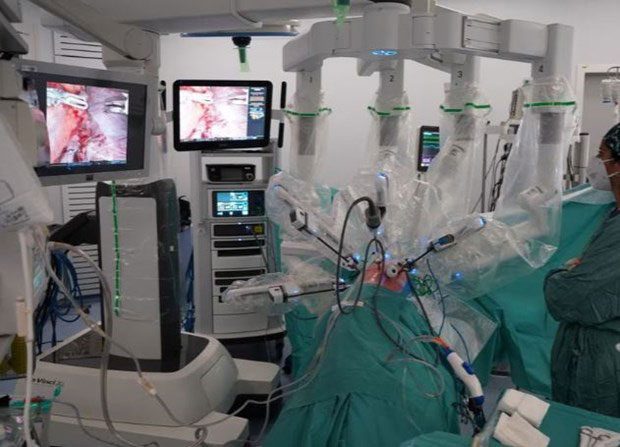Thanks to robotic assistance, surgeons only need to make a small incision in the patient’s skin, fat, and muscle. After the surgery, the patient reported no pain.
Surgeons at Vall d’Hebron Hospital in Barcelona, Spain, have successfully performed a lung transplant using a new technique that employs robotic surgery and creates a new access point without the need to cut through the ribs.

The robotic surgery method reduces pain for patients and allows wounds to heal faster. (Source: Reuters).
In this surgery, with the aid of a four-armed robot named ‘Da Vinci’, the surgeons made a small incision to remove the damaged lung, followed by the insertion of a new lung into the patient’s body.
Notably, the incision was only about 8 cm long, located below the sternum and just above the diaphragm, which is significantly smaller than the approximately 30 cm incisions used in previous techniques.
This is the first time surgeons have restricted the access point for lung transplantation to only the soft tissue area. Consequently, this method reduces pain for patients and promotes faster healing.
Speaking to the press on April 17, Dr. Albert Jauregui, head of the thoracic surgery and lung transplant department at Vall d’Hebron Hospital, emphasized that this technique could enhance patients’ quality of life, decrease recovery time post-surgery, and minimize pain. He hopes that this technique will soon be widely adopted.
According to Dr. Jauregui, to insert the new lung through a small incision, specialists had to “deflate” the organ. The incision was made in an area where the skin has high elasticity, allowing for an expansion of the opening without rib cutting.
However, in addition to the main incision, the surgeons also had to make smaller incisions beside the ribs to accommodate the robotic arms and a 3D camera.
Dr. Jauregui noted that with this technique, surgeons can transplant two lungs through a single incision.
The procedure was performed on a 65-year-old male patient who required a lung transplant due to pulmonary fibrosis.
Post-surgery, the patient reported no pain. Due to the small incision, he only needed paracetamol, whereas conventional lung transplants typically require opioid painkillers post-surgery.
Spain is a global leader in organ transplantation. According to data from the country’s Ministry of Health, in 2022, an average of seven people donated organs each day, and doctors performed 15 organ transplants daily.



















































